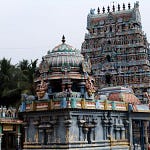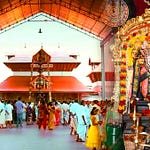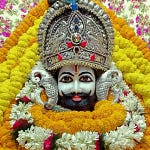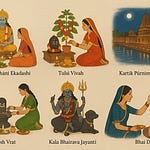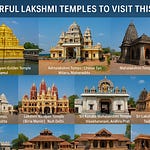Angkor Wat, one of the most awe-inspiring temples in the world, stands as a testament to Bharat’s deep-rooted spiritual, cultural, and architectural influence beyond its modern political boundaries. Built over 900 years ago, this colossal structure—now in Cambodia—was originally a Hindu temple dedicated to Lord Vishnu, later transitioning into a Buddhist site. Despite its rich Indian origins, India has never claimed it, because Sanatan Dharma transcends political borders and belongs to the universe.
This article delves into the history, origin, journey, timeline, cultural significance, rituals, spiritual importance, and travel aspects of Angkor Wat, while exploring its role in the greater Sanatan Dharma tradition.
1. The Origin & History of Angkor Wat
Who Built Angkor Wat?
Angkor Wat was built in the early 12th century by King Suryavarman II of the Khmer Empire. A devoted follower of Lord Vishnu, he envisioned the temple as a sacred representation of Mount Meru, the cosmic abode of the gods in Hindu cosmology.
The name "Angkor Wat" translates to "City of Temples" in Khmer. However, its Sanskrit origins suggest a deeper meaning—"Nagara Vatika," meaning the Garden of the City, emphasizing its divine and celestial nature.
Construction & Architectural Marvel
The construction lasted 37 years, requiring over 4,000 elephants and one member from every family in the kingdom.
Angkor Wat is the largest religious monument in the world, covering 162.6 hectares (402 acres).
Built using sandstone blocks, some weighing up to 1,500 kg, transported from the Kulen Mountains, nearly 50 km away.
The temple represents Mount Meru, the Hindu cosmic mountain, with five towers symbolizing the mountain's peaks.
Architectural Significance
The temple is uniquely oriented west, an unusual feature for a Hindu temple, as most are oriented eastward. Some scholars believe this signifies its funerary function for King Suryavarman II, aligning it with Vishnu’s association with the setting sun.
The bas-reliefs depict stories from Hindu epics Ramayana and Mahabharata, including the Churning of the Ocean (Samudra Manthan), which is one of the finest depictions in Hindu temple art.
The entire complex is aligned with astronomical precision, proving the advanced scientific knowledge of the builders.
2. Angkor Wat’s Journey: From Hindu to Buddhist Influence
The Golden Age of Hindu Worship (12th–14th Century)
For nearly 200 years, Angkor Wat remained a center of Vishnu worship, with elaborate Vedic rituals, yajnas (fire offerings), and celebrations of major Hindu festivals.
Transition to Buddhism (14th Century–Present)
In the late 13th century, the Khmer rulers slowly adopted Mahayana Buddhism.
By the 16th century, Theravada Buddhism became dominant, and the temple was repurposed for Buddhist monks and devotees.
Even today, despite its Buddhist adaptations, the Hindu iconography, inscriptions, and sculptures remain intact, showcasing its deep Sanatan roots.
3. Cultural Significance & Sanatan Dharma Connection
Angkor Wat in Hindu Mythology
Angkor Wat is not just a temple but a symbol of Hindu cosmology. The entire structure represents:
The Universe – The moat signifies the cosmic ocean.
Mount Meru – The temple’s central towers symbolize the home of the gods.
The Sun and Time – The alignment of the temple’s corridors correlates with solstices and equinoxes.
Sanatan Dharma's Influence on Cambodia
Before Buddhism became dominant, Cambodia was a stronghold of Sanatan Dharma (Hinduism). The region was once known as "Kambuja," a Sanskrit name derived from Indian influence. Hindu gods like Vishnu, Shiva, and Brahma were widely worshipped, and Hindu practices shaped the kingdom’s traditions.
Even today, many Hindu customs, festivals, and rituals remain an integral part of Cambodian culture.
4. Rituals, Devotees, and Festivals at Angkor Wat
Hindu Rituals Performed
Despite being a Buddhist temple today, Hindu rituals are still performed in some sections:
Vishnu Puja – The main idol of Lord Vishnu, still present in the temple, receives offerings from devotees.
Aarti and Bhajans – Some Hindu priests conduct special prayers for Indian and foreign visitors.
Festivals Celebrated – Hindu festivals like Diwali, Navaratri, and Shivratri see gatherings of Hindu devotees.
Buddhist Rituals & Monastic Practices
Buddhist monks chant prayers daily.
Pilgrimages take place, attracting thousands of Buddhist and Hindu devotees.
New Year celebrations in Cambodia have Hindu influences, similar to Makar Sankranti and Vishu in India.
5. Travel & Pilgrimage: How to Visit Angkor Wat
For modern travelers and spiritual seekers, Angkor Wat remains a must-visit destination. Here’s how you can explore this majestic site:
Best Time to Visit
November to February – Cooler, dry season (ideal for exploring).
March to May – Hot season, but fewer crowds.
June to October – Rainy season, but lush green landscapes make it scenic.
How to Reach Angkor Wat?
By Air: The nearest airport is Siem Reap International Airport (REP), about 7 km from Angkor Wat.
By Road: Taxis, tuk-tuks, and bicycles are popular ways to reach the site.
Entry Fee & Timings
Foreigners: $37 for a one-day pass, $62 for a three-day pass.
Timings: 5:00 AM – 6:00 PM (best time: sunrise or sunset).
Major Attractions at Angkor Wat
Central Temple Complex – Main Vishnu shrine, intricate carvings, and grand architecture.
Bayon Temple – Known for 216 giant stone faces of Lord Brahma/Buddha.
Ta Prohm – The iconic temple intertwined with giant tree roots.
Banteay Srei – A small but beautiful temple dedicated to Goddess Parvati.
6. Why India Never Claimed Angkor Wat
Despite its Hindu origins, India never laid claim to Angkor Wat because:
Sanatan Dharma is Universal – It doesn’t seek ownership but rather spreads wisdom and devotion.
Cultural Harmony – Cambodia has preserved the temple, respecting its Hindu roots while embracing Buddhism.
Spiritual Over Political Boundaries – Just as Hinduism flourished in Southeast Asia, its heritage belongs to all seekers.
Even today, Angkor Wat stands not as a monument of conquest but as a bridge of shared heritage between India and Cambodia.
The Eternal Flame of Dharma
Angkor Wat is more than just an ancient temple—it is a living embodiment of Sanatan Dharma’s timeless spirit. It represents the power of devotion, knowledge, and architectural genius, proving that true civilization transcends borders.
As millions visit Angkor Wat every year, they walk through the corridors of history, faith, and divinity, witnessing the grandeur of Bharat’s legacy beyond its borders.
Sanatan Dharma lives on—not in claims, but in devotion. 🙏🔥




